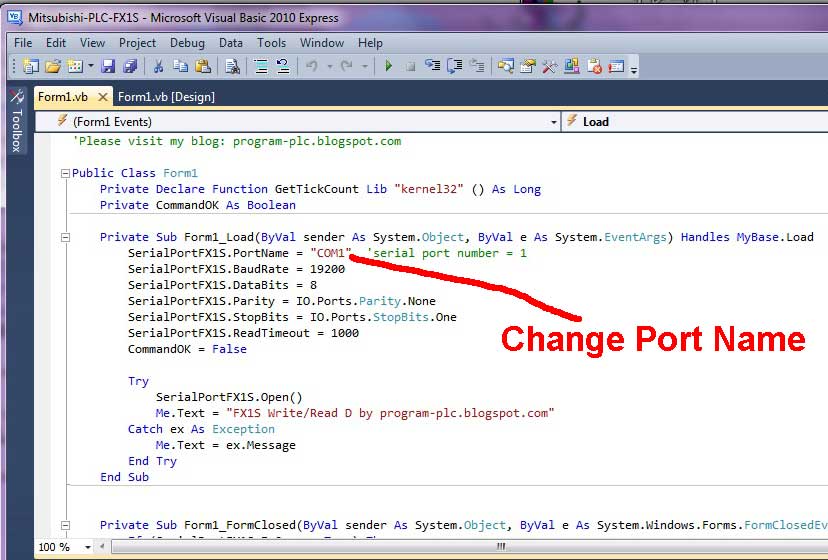

Both procedures should be executed inside a transaction block. Currently it creates a orphan record in the first Sql table as the second store procedure failed to execute. Thus the try block is always followed by one or more catch blocks. In nested Try-Catch statements, if there isn’t any inner Catch block with an appropriate exception type, then the exception will flow to the outer Catch block. What We Are Gonna Use In This Project: - Visual Basic. In visual basic, we can define a Try-Catch statement within another Try-Catch statement based on our requirements.
#VISUAL BASIC NET TRY CATCH CODE#
It is a good practice to test your transaction state before issuing a COMMIT TRANSACTION or ROLLBACK TRANSACTION statement in a CATCH block to ensure consistency. How do I use 'Try Catch' on this block of vb code if the second store procedure, for whatever reasons, failed to execute. Visual Basic Nested Try-Catch Statements.
If the XACT_STATE() function return 0, it means no transaction is pending, therefore, you don’t need to take any action. You can issue a COMMIT TRANSACTION statement in this case. In case the XACT_STATE() function returns 1, it means that a committable transaction is pending. If the XACT_STATE() function returns -1, it means that an uncommittable transaction is pending, you should issue a ROLLBACK TRANSACTION statement. Inside a CATCH block, you can test the state of transactions by using the XACT_STATE() function. PRINT language: SQL (Structured Query Language) ( sql )īecause of division by zero error which was caused by the formula, the control was passed to the statement inside the CATCH block which returned the error’s detailed information. However, either a TRY block or a CATCH block can contain a nested TRY CATCH, for example: You can nest TRY CATCH construct inside another TRY CATCH construct. If you use them outside of the CATCH block, all of these functions will return NULL. So, if we have one more try block outside the inner try block, the outer try-catch block catches the exception. In the above example we add a throw statement in the catch block basically rethrowing System.Exception causing the same exception to occur in the catch clause. Note that you only use these functions in the CATCH block. End Try Console.ReadLine() End Sub End Class. ERROR_STATE() returns the state number of the error that occurred. ERROR_SEVERITY() returns the severity level of the error that occurred. ERROR_NUMBER() returns the number of the error that occurred. ERROR_PROCEDURE() returns the name of the stored procedure or trigger where the error occurred. ERROR_MESSAGE() returns the complete text of the generated error message. ERROR_LINE() returns the line number on which the exception occurred. Inside the CATCH block, you can use the following functions to get the detailed information on the error that occurred: However, if any statement inside the TRY block causes an exception, the control transfers to the statements in the CATCH block. If the statements between the TRY block complete without an error, the statements between the CATCH block will not execute. statements that handle exception END CATCHĬode language: SQL (Structured Query Language) ( sql ) Note that the source code filename is the first argument after the path to vbc.- statements that may cause exceptions END TRY. For compilers that support newer versions of the Visual Basic programming language, see NET Framework, but only supports language versions up to Visual Basic 2012, which is no longer the latest version. This compiler is provided as part of the Microsoft (R). Microsoft (R) Visual Basic Compiler version Ĭopyright (c) Microsoft Corporation. NET is installed, lives at C:\Windows\Microsoft.NET\\\vbc.exeĬ:\Users\rdkoziel\Publish>c:\Windows\Microsoft.NET\Framework64\v9\vbc.exe cpubusymt.vb /out:cpubusymt.exe /target:exe The command-line Visual Basic compiler, when. Kudos to jreininger and geob! This thread was on point for me this week.Ī few tidbits for anyone that may follow.Ĭode: I needed to remove the Begin/End Region statements to get this to compile. TmpWorker2.Priority = ThreadPriority.Normalĭim Span As TimeSpan = (BeginTime)Ĭonsole.WriteLine("CPUWorkOut(Worker1) processed three million sines in " & Span.Milliseconds & " milliseconds!")Ĭonsole.WriteLine("CPUWorkOut(Worker2) processed three million sines in " & Span.Milliseconds & " milliseconds!") 
TmpWorker1.Priority = ThreadPriority.Normal It will peg a 2 Proc VM.ĭim tmpWorker1 As New Thread(AddressOf Worker_Thread_1)ĭim tmpWorker2 As New Thread(AddressOf Worker_Thread_2) I then set a batch file up to run from VMware Tools at start up. I compiled this in VB 2010, and it worked great. I took it one step further, and made it multi-threaded.






 0 kommentar(er)
0 kommentar(er)
